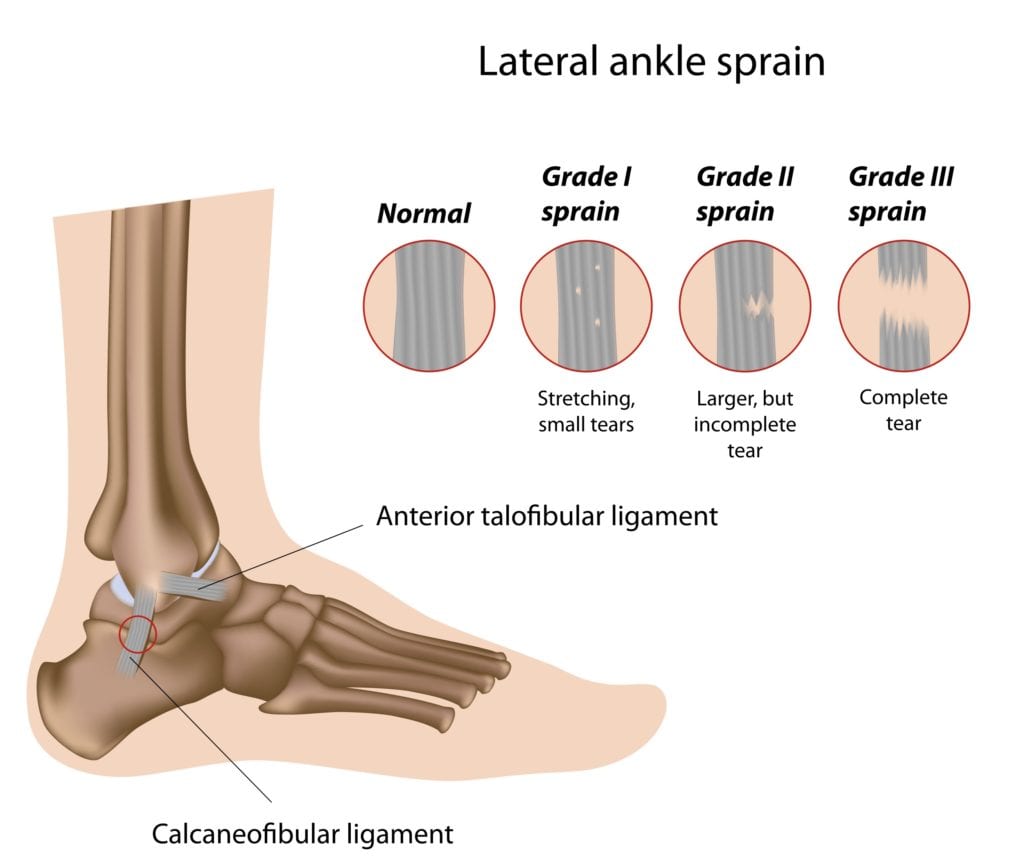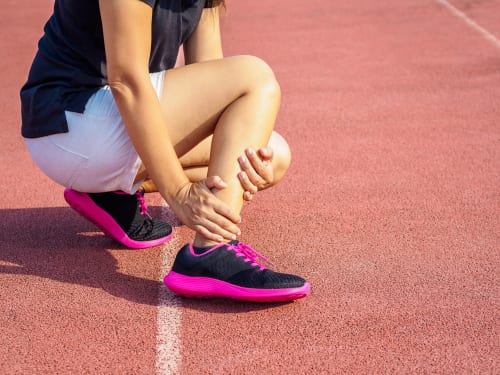Our feet and ankles are an important component of the body that allow us to walk, run, crouch, twist, jump and perform so many other dynamic activities with the lower body. The ankles are one of the most common areas for musculoskeletal injuries of the lower body. Ankle sprains occur in an average of 25,000 people per day and more than 1 million people per year present to the emergency room for ankle injuries. Ankle injuries affect all ages and abilities in life from young to old, but most commonly occur in people ages 15 to 24 years old and during athletic activity.
What Kinds of Ankle Injuries are there?
An injury to the ankle is classified by the type of tissue affected bone, ligament, or tendon. An ankle injury can affect one or all of these structures. *Injury to the bone means the bone is broken or fractured in one or more places. The most common fractures occur to the lateral malleolus or the end of the fibula, the small bone on the outside of the ankle, after rolling the ankle or inverting it. Treatment may be
as simple as a boot to stabilize the fracture or surgical approach may be required if the bone is displaced.
*Injury to the tendons on the outside of the ankle commonly occurs when the ankle is rolled and is caused by overstretching or strain of the muscles, the most common are the peroneal muscles. Treatment may be conservative if there is simple tendinitis or may be more involved if there is a partial rupture or tear of the tendon.
*Injury to the ligaments: Lateral ankle sprain occurs when the ankle is rolled causing
injury to several of the ligaments that support the outer aspect of the ankle.
So What is an Ankle Sprain?

The most common sprain is a lateral ankle sprain. This occurs when the ankle and foot are
rolled inwards, or inverted, causing the ligaments that support the ankle to overstretch and
partially or fully tear. Ligaments are the rubber band like structures that connect bones to bones
and offer stabilization. Ankle sprains can occur with walking or running on an even surface, high
impact activities and those that involve cutting back and forth such as basketball.
https://orthoinfo.aaos.org/en/diseases–conditions/sprained-ankle/
Signs and Symptoms of Ankle Sprain
Patients usually experience pain and swelling immediately following the injury, many people
report hearing an audible “pop” at the time of injury. Bruising moderate to severe in nature can
occur later depending upon the severity of the ankle sprain as well as moderate to severe pain
with walking and standing.
Diagnosis and Treatment of Ankle Sprain
Immediate treatment post injury should include ice and elevation. Further evaluation should
include X Ray of the ankle to rule out fracture and evaluate for instability on examination by a
medical provider. Healing time of the ankle sprain depends on the severity of the sprain which
is graded I-III.
A Grade I sprain is mild swelling and tenderness of the ankle likely stretching of
the fibers. A Grade II sprain is a moderate injury with partial tearing of the ligaments and is
associated with moderate tenderness and swelling, and mild instability of the joint with testing. A
Grade III ankle sprain is a severe sprain associated with complete rupture of the ligament,
usually more prominent swelling and bruising, and moderate instability of the joint with testing.
Treatment of the ankle in the immediate post injury phase is focused on reducing swelling and
stabilizing the joint to prevent re-injury and further injury. Ice and elevation should be used for
immediate post injury treatment, if the injury is moderately severe then a boot or ankle brace
may offer stabilization and support. As the swelling decreases more weight bearing and motion
of the ankle can be employed as tolerated, physical therapy may be helpful. If the ankle sprain
was severe and the patient has recovered but is still experiencing instability and pain then
regenerative techniques employing solutions that promote growth and healing of ligament/
tendon, structures may be useful. https://charmaustin.com/relieve-pain-and-repair-injury/

Michelle Hall
PA-CPhysician Assistant




